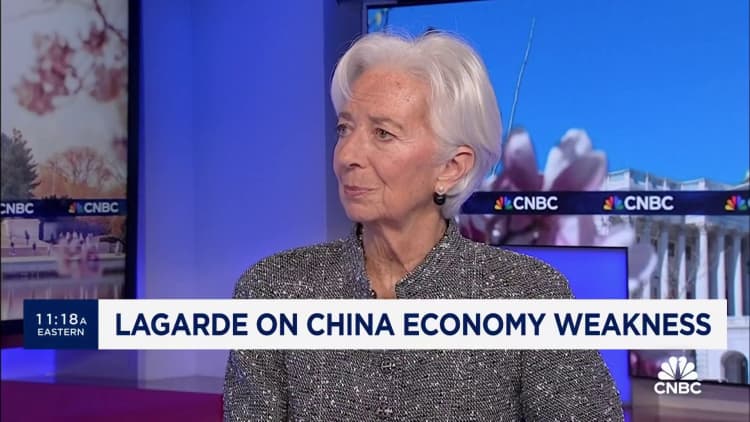Variegated tulips planted in flower beds opposite the Bank of England in the City of London on 7th May 2024 in London, United Kingdom. =
Mike Kemp | In Pictures | Getty Images
LONDON — The Bank of England is set to hold interest rates steady at its Thursday meeting, with traders expected to pore over the details of Governor Andrew Bailey’s statement as anticipation builds for a potential summer rate cut.
The BOE’s Monetary Policy Committee is widely expected to keep the Bank Rate at 5.25%, with an announcement due at midday.
The committee will assess data including U.K. inflation, which came in at 3.2% in March, slightly higher than consensus forecasts had suggested and still some way from the BOE’s 2% target. Core inflation, which excludes energy, food, alcohol and tobacco, was 4.2%, while services inflation, an important metric for policymakers, was 6%.
Bailey has nonetheless stressed in recent weeks that he sees strong evidence that inflation is coming down as a result of tighter financial conditions.
Meanwhile, the headline rate of price rises is set to drop considerably in April due to a sharp year-on-year decline in energy prices, with some forecasts putting it below 2%.
Traders appear uncertain about a June rate cut, according to money market pricing, which puts the chance around 50-50. Bets have meanwhile increased on a first move in August, with a roughly 80% probability of a 25 basis point trim, and a total of 50 basis points of cuts this year.
Francesco Garzarelli, head of research at Eisler Capital, said investors would be paying attention to the split of votes on Thursday from the MPC’s nine voting members for clues about the June meeting.
The latest March meeting saw eight votes to keep rates steady and one to cut.
“There’s much more in the communication. Bailey’s commentary will be important, and the outlook forecast,” Garzarelli told CNBC’s “Squawk Box Europe” on Thursday.
“There’s also an optical element here, inflation on the headline numbers is going to fall quite rapidly. It’s going to reach target pretty soon, and that will put the Bank under a lot of pressure to start normalizing policy.”
European divergence
“We’ve begun to see in the last couple of months a divergence between U.S. policy and U.K. and European policy, and I think here in the U.K. we will definitely see cuts later in the year,” Emma Wall, head of investment research and analysis at Hargreaves Lansdown, told CNBC’s “Street Signs Europe” on Wednesday.
Monetary policymakers in the U.S. Federal Reserve have firmly pushed back market expectations for rate cuts to September at the earliest, due to a recent acceleration in inflation. Some economists see a possibility of no cuts at all from the Fed this year.
This has led central bankers in Europe to stress that they will chart their own course and not wait to take their cues from the Fed. The Swiss National Bank announced a surprise rate cut in March, and Sweden’s Riksbank also cut rates as expected on Wednesday.
Officials at the European Central Bank, which sets monetary policy for the 20-nation euro zone, have given a strong signal they will cut in June barring a major shock.

Hargreaves Lansdown’s Wall expects a June cut from the BOE followed by just one more this year. This is in large part down to the economic picture in the U.K., she said, with the U.S. economy and consumer health proving far more robust despite a recent slowdown.
The U.K. this week received a growth downgrade for 2024 from the Organisation for Economic Co-operation and Development, which also expects the U.K. to be the growth laggard of G-7 economies for the next year, Wall noted.
The U.K. entered a shallow recession in the second half of 2023, though recent figures have pointed to slight growth in early 2024.
But according to research group Capital Economics, markets are being too tentative in their rate cut pricing. It expects inflation to fall below 2% in April and to 0.5% later this year, flipping the pressure on the BOE to tackle too-low inflation instead.
As a result, they see the MPC cutting in June and bringing rates to 3% next year, versus market pricing for 4%.


